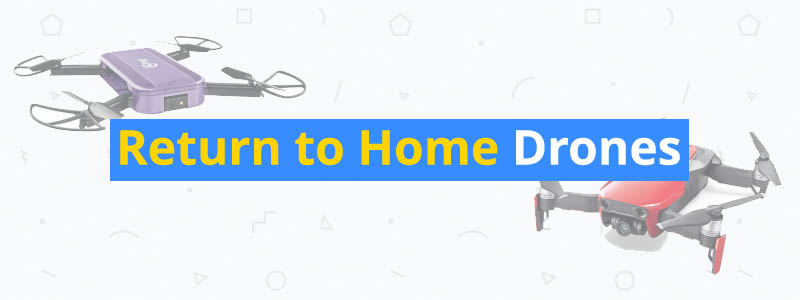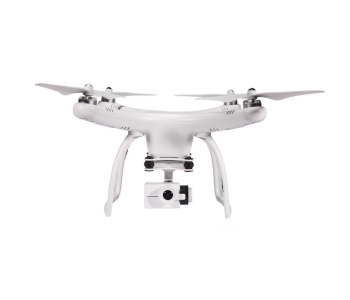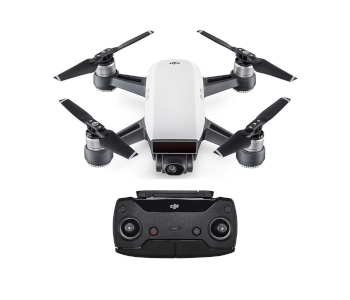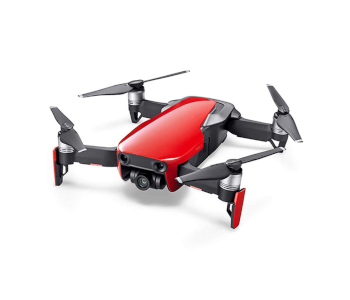8 Return to Home Drones
This review looks at 7 excellent return to home drones. So, what is the return to home (RTH) feature and why should you care? It’s a built-in technology that returns the drone to its last recorded home point. That point is usually where the pilot and their remote controller or RC is located. The RC could be a purpose transmitter or an app-controlled device like a tablet or smartphone.
Some copters lock the takeoff point and auto store it as the return to home. Others are changeable on the fly. You may have heard of drone pilots losing their beloved craft to the dreaded flyaway. Flyaways occur when the aircraft flies off unexpectedly. Pilots sometimes relocate lost drones but many are never seen again. It’s easy to blame the model, but most flyaways are the result of pilot error.
| Budget |
|---|
 |
| C-Me RTH Social Media Quad |
| 4.3/5.0 |
| Flight Time: 10 minutes |
| Charging Time: 90 minutes |
| Foldable, ultra-portable, built-in camera, find me / follow me, 1-button sharing. |
| Check Amazon |
| Best Value |
|---|
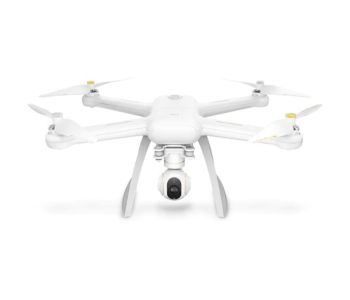 |
| Xiaomi Mi 4K FPV RTH Drone |
| 4.6/5.0 |
| Flight Time: 27 minutes |
| Charging Time: 180 minutes |
| Easy to pilot, multiple protections, modular design, long flight time, long range. |
| Check Banggood |
| Top Pick |
|---|
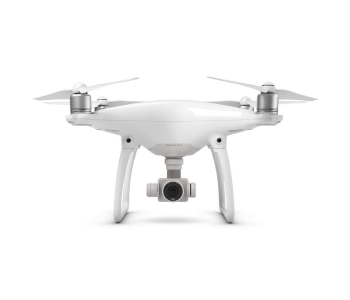 |
| DJI Phantom 4 RTH |
| 4.5/5.0 |
| Flight Time: 28 minutes |
| Charging Time: 60 minutes |
| Beginner-friendly, intelligent flight modes, quality 4K gimbal camera, DJI app. |
| Check Amazon |
Flyaways — Causes and Solutions
The five common pilot errors that result in drone flyways include:
- The pilot never set a home point
- Failed to reset a home point after moving to a new location
- Ignored or failed to notice compass interference
- The pilot flew the drone out of the line of sight (LOS)
- Never set an appropriate RTH altitude
The above points won’t make much sense to those who haven’t flown yet. Regular fliers will know exactly what they refer to. Flyaways are less common than they used to be thanks to failsafe technology like auto RTH. Despite that, they still happen with careless piloting.
Types of Return to Home (RTH)
Not all drones have an RTH feature, especially nano, micro, and mini quadcopters. Indoor-only drones have little use for it either. But anyone who flies outdoors should consider it as a vital feature.
The three main types of return to home include:
- Smart RTH
- Failsafe RTH
- Low battery RTH
How the Return to Home Feature Works
Pilots usually trigger the Smart RTH manually. There’s either a tap icon on a mobile screen or a dedicated button on the controller. The drone auto returns to its takeoff point once you hit the control. Some drones allow you to cancel the Smart RTH at any time and resume flying.
Failsafe RTH kicks in when the drone loses its signal with the controller. The craft typically descends to its preset RTH altitude (height), and then heads back to base. Pilots can usually cancel the RTH if the signal comes back before it reaches the launch point. Another failsafe RTH puts the drone into a steady hover or lands it. The pilot can then walk towards it and take back control if the signal returns.
A low-battery RTH brings the bird back automatically if the battery gets critically low.
Other Considerations
Return-to-home isn’t the only safety feature found on drones. Some come with an emergency stop function. It works by auto landing the quad if the pilot gets into a panic or sees a potential problem up ahead. Altitude hold, headless mode, prop guards, and one-key controls also make flying safer and easier. There are other buying considerations as well as safety features of course.
Think about the photography and video quality with camera drones, and image stabilization. Battery life (flight time), the cost of extra batteries, and control range are others.
About My RTH Drone Guide
My guide reviews 8 feature-packed drones all of which have a return to home (RTH) feature. This list is the result of personal research, the opinions of industry experts, and user reviews. The first three products are Best Budget, Best Value, and the Top Pick. The ones under those are by price, lowest to high. The table below shows these excellent RTH picks as they appear on the page.
Return to Home Drones Comparison Table
| Make and Model | Flight Time | Charging Time | Price |
|---|---|---|---|
| C-me Social Media Flying Camera w/ RTH | 10 minutes | 90 minutes | Check Price |
| Xiaomi Mi 4K FPV Camera Drone w/ RTH | 27 minutes | 180 minutes | Check Price |
| DJI Phantom 4 Camera Quadcopter w/ RTH | 28 minutes | 60 minutes | Check Price |
| Holy Stone F181W FPV Drone w/ RTH | 10 minutes | 90 minutes | Check Price |
| Hubsan H501S X4 w/ RTH | 20 minutes | 150 minutes | Check Price |
| UPair Drone One Plus w/ RTH | 15 minutes | 90 minutes | Check Price |
| DJI Spark + Controller (RC) w/ RTH | 16 minutes | 90 minutes | Check Price |
| DJI Mavic Air, (Flame Red) w/ RTH | 21 minutes | 55 minutes | Check Price |
1. C-Me Social Media Camera Quad RTH | Best Budget
Editor’s Rating: 4.3/5
This folding camera drone comes with GPS integration and a Return to Home (RTH) feature. They call it C-me—a portable, flying selfie stick that captures memorable events.
- Best feature 1: Return to Home failsafe feature
- Best feature 2: Auto takeoff/landing
- Plus points: Foldable, ultra-portable, built-in camera, find me / follow me, 1-button sharing
- Minus points: Short flight time, short range, poorly designed prop guards
C-me Flying Selfie-Stick Standout Features
The C-me is an affordable, pocket-sized drone that you can take anywhere. It happens to be simple to fly too. That’s great news for younger pilots and novice users. It has Auto Takeoff & Landing, Follow Me, and Find Me modes, as well as RTH. This little quad also has a seamless online connection. The smooth data transfer lets pilots share their aerial images and HD video to social media on the fly.
The tiny camera provides 8MP photos and Full-HD 1080p videos. The drone’s GPS helps to steady the craft in the air so that the footage is as clear as possible. The camera also has an adjustable angle of 0-90° and offers 360° panoramic views. Heck, there’s even a built-in video light and LED flash. The footage isn’t cinematic quality, but it’s more than okay for a camera quad at this price.
The Not So Good
The C-me has its critics, but it’s a cracking little quad if you have realistic expectations. The flight time is short at around 8–10 minutes max. Recharging is average at 60–90 minutes. The range is also short at just 64 ft., but then it is a “selfie” drone. The prop guards are a pain to lock into place and an obvious design flaw. There are no guarantees they’ll stay put once in position either.
| Tech Specs |
|---|
| Dimensions: 2.5 x 4.8 x 6.2” |
| Product Weight: 8 oz. |
| Camera: 8MP Full HD 1080p w/ adjustable angle |
| Max Flying Time: 10 minutes |
| Max Range: 64 ft. (20 meters) |
| Battery: Built-in 750mAh 2S LiPo |
| Charging Time: 90 minutes |
| The Pros |
|---|
| Return to Home Failsafe feature |
| Easy to fly (1-button controls) |
| GPS integration |
| Altitude hold |
| Auto takeoff/landing |
| Foldable, ultra-portable designed |
| Built-in HD video camera |
| Find Me / Follow Me |
| 1-button online sharing |
| USB wall charging |
| The Cons |
|---|
| Short flight time |
| Short control range |
| Next to useless prop guards |
2. Xiaomi Mi 4K FPV Drone W/ RTH | Best Value
Editor’s Rating: 4.6/5
The Xiaomi Mi is a quality 4K camera quad with optimized safety features including Return to Home (RTH). It has a modular design and retractable landing gear that provides obstruction-free footage.
- Best feature 1: Return to Home failsafe feature
- Best feature 2: 4K 30fps 3-axis gimbal camera
- Plus points: Easy to pilot, multiple protections, modular design, long flight time, long range
- Minus points: Long charging time, no proper guards, poor aesthetics
Xiaomi Mi Standout Features
The Xiaomi Mi boasts a range of intuitive flight controls and multiple protections. Its return-to-home (RTH) feature detects low battery levels and auto sends the bird to its home point. Others are Failsafe Return, GPS Location Tracking, Sensor Redundancy, and GEO-fencing protection. The quad comes to an automatic stop and hovers to prevent accidents if it approaches a no-fly zone.
Anyone at any level can easily fly this quad. A one-key takeoff & landing, Tap to Fly, Waypoints, and Point of Interest add to its pilot-friendly appeal. Xiaomi Mi sports powerful brushless motors and has a quick-release, modular design. The flight range is decent and the flight time is a long 27 minutes.
Xiaomi Mi Camera
A 3-axis detachable gimbal stabilizes the integrated 4K UHD video camera. The impressive gimbal corrects up to 2000 vibrations per second. The resulting aerial footage is smooth, sharp, and consistent for a quad in its class. The controller holds a regular smartphone so you can experience First Person View (FPV). FPV lets pilots see what the drone’s camera sees in real time up to a range of 1.24 miles.
The Not So Good
The charging time is around 180 minutes (3 hours). That forces users to invest in extra batteries. Second, there aren’t any propeller guards in the box. Prop protectors are available online and shouldn’t cost much over ten dollars. The final con is more of a nitpick than a disadvantage. That is, the Xiaomi Mi’s aesthetics leave a lot to be desired. Some say it struggles to look like a mini DJI wannabe.
| Tech Specs |
|---|
| Dimensions: 15 x 17.9 x 6.7” |
| Product Weight (excluding RC): 23.6 oz. |
| Camera: 12MP WIFI FPV 4K 30fps & 1080P 3-Axis Gimbal |
| Max Flying Time: 27 minutes |
| Max Range: 1.24 miles |
| Battery: 17.4V 5100mAh LiPo |
| Charging Time: 180+ minutes (3+ hours) |
| The Pros |
|---|
| Excellent value for its class |
| Collapsible design, easy to carry |
| Return to Home Failsafe feature |
| 4K 3gimbal camera (1080p also available) |
| Easy to pilot |
| Multiple protections |
| Modular design |
| Long flight time |
| Long flight and FPV range |
| The Cons |
|---|
| Long charging time |
| No prop guards |
| Poor aesthetics |
3. DJI Phantom 4 Camera Quad W/ RTH | Top Pick
Editor’s Rating: 4.5/5
The Top Pick goes to DJI’s famous Phantom 4 UHD gimbal camera quadcopter. The reliability and steadfastness of this bird make it a pilot’s favorite drone around the world.
- Best feature 1: Auto Return to Home (RTF) failsafe feature
- Best feature 2: GPS technology
- Plus points: Beginner-friendly, intelligent flight modes, quality 4K gimbal camera, DJI app
- Minus points: Vague instructions, obstacle avoidance only front-facing, cost of batteries
DJI Phantom 4 Standout Features
DJI’s Phantom 4 has three auto Return to Home (RTH) features. They are, Smart RTH, Low Battery RTH, and Failsafe RTH. The Phantom 4 boasts some intelligent flight support systems that assist safe, reliable flying. This quad can fly indoors and outside thanks to its dual satellite and vision positioning systems. And the effective obstacle sensing constantly scans ahead to avoid obstacles.
This quad is beginner-friendly but also has plenty of appeal at the professional level. Features welcomed by all pilots include auto takeoff and landing, TapFly, and ActiveTrack. The quad’s Intelligent Flight modes help photographers produce the best possible aerial footage. They are Course Lock, Home Lock, Point of Interest (POI), Follow Me, and Waypoints.
The Phantom 4’s Gimbal Camera
At the heart of the DJI Phantom 4 is its aerial camera. It can shoot 4k UHD video at 60fps (frames per second), and 1080p Full HD at 120fps. The 12 megapixel stills are ultra-clear and tack sharp. The quad boasts a long 3.1 miles low-latency range HD downlink. And the 28 minute flight time is impressive and fits in well with the long range distant filming potential.
The Not So Good
There are complaints that the DJI GO app—as good as it is—lacks proper instructions. The obstacle avoidance system does a fantastic job, but it’s only front-facing. The final downside is the high cost of DJI flight batteries. There are cheaper third-party options available (not recommended by DJI).
| Tech Specs |
|---|
| Dimensions: 15 x 8.7 x 12.8” |
| Product Weight: 49.6 oz. (1406g) |
| Camera: 12MP UHD 4K stabilized |
| Flight Time: 28 minutes |
| Transmission Range: 3.1 miles (5 km) |
| Battery: 15.2 V PH4 – 5350 mAh LiPo |
| Charging Time: 60+ minutes depending on the power source |
| The Pros |
|---|
| 3 Return to Home (RTH) failsafe features |
| High-quality gimbal camera |
| Beginner-friendly quadcopter |
| Tap fly technology |
| Follow Me mode (ActiveTrack) |
| Long flight time |
| Long transmission range |
| Obstacle avoidance system |
| Fast 44.7 mph top speed |
| The Cons |
|---|
| Scant app tutorials |
| Front-facing obstacle avoidance |
| Costly batteries |
4. Holy Stone F181W FPV Camera Drone W/ RTH
Editor’s Rating: 4.6/5
Meet the Holy Stone F181W, a WiFi First Person View (FPV) quadcopter. It has One Key Return to Home (RTH) and a plethora of other pilot-friendly features to check out.
- Best feature 1: One Key Return to Home (RTH) failsafe
- Best feature 2: Headless mode
- Plus points: Altitude hold, speed control, one key takeoff & landing, 3D flips, LED lights
- Minus points: Not good in winds, short flight time, poor instructions
Holy Stone F181W Standout Features
It’s nerve-racking flying a drone for the first time, but not with the Holy Stone F181W. This beauty comes with one-key takeoff/landing and a headless mode. That means there’s no need to adjust the quad’s position before or during flights. There’s also an altitude hold function that puts the drone into a steady hover. Altitude hold is vital when you need to steady the craft to take aerial photos.
The multiple speed option is perfect for newbies who need to start slow. It doesn’t take long to get confident flying the F181W, and you’ll be performing 3D flips before you know it. The controllable LED lights are a nice touch that looks super cool and let you see the quad in the dark.
Camera Capability
The First Person View (FPV) camera has a 120° wide-angle lens and a 720p video resolution. The footage won’t blow you away, but it’s perfectly viewable. Think of it as a training drone and an excellent introduction to using aerial cameras. You can also use your smartphone screen and the free flight app to see what the camera sees in real time. The quad is even compatible with VR Headsets.
The Not So Good
The worst thing about this confident little drone is its ultralightweight. It’s just too light for windy conditions, so that’s something to think about. The max flight time is only 10 minutes although 8 minutes seems to be a more accurate average for outdoor flying. The final gripe is the all too familiar issue with poorly translated instructions. YouTube is your better source.
| Tech Specs |
|---|
| Dimensions: 12.2 x 12.2 x 3.3” |
| Product Weight: 4.09 oz. |
| Camera: 720P HD 120° HD WiFi |
| Max Flying Time: 10 minutes |
| Max Range: 328 ft. (100 meters) |
| Battery: 3.7 V 750mAh LiPo |
| Charging Time: 90 minutes |
| The Pros |
|---|
| One Key Return to Home (RTH) |
| Headless Mode |
| Altitude Hold |
| Multiple speed control |
| One key takeoff/landing |
| FPV real-time transmission |
| VR headset compatible |
| 3D flips |
| Bright LED lights |
| The Cons |
|---|
| Not good in winds |
| Short flight time |
| Poor instructions |
5. Hubsan H501S X4 Flying Camera Quad W/ RTH
Editor’s Rating: 4.4/5
Hubsan’s H501S X4 is a feature-rich camera quadcopter with an affordable price tag. It’s a fantastic little selfie quad with built-in GPS and a Follow Me (object tracking) mode.
- Best feature 1: Return to Home (RTH) failsafe feature
- Best feature 2: Powerful brushless motors
- Plus points: Headless mode, altitude hold, follow Me, LCD RC, flight time/range, upgrades
- Minus points: Takes a long time to charge, no camera gimbal
Hubsan H501S X4 Standout Features
One-key return works as a low battery power protection feature. It auto returns the drone to its takeoff point when the battery reaches a certain level. And the headless mode moves the quad according to the direction of the controls, not its nose. Another useful feature is the altitude hold that flies the drone at a fixed height.
Multi-Function FPV Remote Controller
The X4’s remote controller (RC) is quite unique. It’s a multi-function RC that has a bright integrated 4.3” LCD and an inner GPS module. The built-in screen lets pilots view what the camera sees in First Person (FPV). That means no mobile device needed. You can also read vital flight data on the LCD’s screen. The data includes things like speed, position, altitude, and battery level, etc.
Camera Capability
This drone is First Person View (FPV) ready which means it can live stream right out of the box. The onboard HD camera has 1080p resolution and captures 3 megapixel photos. The image quality is more than satisfactory for a drone in this price category. It even exceeds the expectations of many pilots despite the absence of a stabilizing gimbal. All aerial footage saves to a MicroSD card.
The Not So Good
It takes 2.5 hours (150 minutes) to charge the battery. That’s a long time for a 20 minute flight, so spare batteries are must-have extras for most pilots. The FPV camera—though good—doesn’t have gimbal stabilization. That results in some inevitable shake and blur under certain flying conditions.
| Tech Specs |
|---|
| Dimensions: 8.6 x 8.6 x 2.7” |
| Product Weight: 14.46 oz. |
| Camera: Built-in 90 1080P HD |
| Max Flying Time: 20 minutes |
| Max Range: 984 ft. (300 meters) |
| Battery: 7.4V 2700mAh Lipo |
| Charging Time: 150 minutes (2.5 hrs.) |
| The Pros |
|---|
| Return to home failsafe |
| Altitude hold function |
| Powerful brushless motors |
| Stable flier, easy to pilot |
| Controller w/ integrated lCD |
| First Person View (FPV) |
| Follow Me mode |
| Decent flight time |
| Reasonable flight range |
| The Cons |
|---|
| Long charging time |
| Camera not stabilized (no gimbal) |
6. UPair One Plus W/ 2.7K Camera Drone & RTH
Editor’s Rating: 4.3/5
The UPair One Plus is another excellent choice for beginners and experienced users. It comes equipped with a 12MP 2.7K HD Panasonic camera that has an adjustable lens.
- Best feature 1: Return to Home (RTH) failsafe feature
- Best feature 2: Easy to pilot at beginner level
- Plus points: Headless mode, Altitude Hold, Follow Me, gimbal camera, decent flight time
- Minus points: No obstacle avoidance, poor instructions
UPair One Plus Standout Features
The exceptional build quality of this drone is surprising considering its price. There are three GPS Return to Home (RTH) features. They are auto one-key RTH, auto Low Voltage RTH, and auto Lost Signal RTH. The headless mode moves the drone in the direction of the controls, not by orientation. Altitude hold and the Follow Me mode make this an ideal selfie drone.
The flight time is around 18 minutes which is quite decent compared to others in its class. The remote controller (RC) has a device clamp that accommodates most regular-sized smartphones. Pilots can view the live feed and access various flight functions from the phone’s screen.
Camera Capability
UPair’s high-resolution Panasonic camera supports 2.7k HD video and 12MP photos. The First Person View (FPV) displays its live video feed on a smartphone screen. The screen becomes the eye in the sky and the closest a person can get to being in the actual pilot’s seat. The camera has a 90° adjustable lens that gives more control over the outcome of aerial vids and pics.
The Not So Good
You must be extra careful flying this camera quad as there’s no obstacle avoidance. That makes it a better choice for advanced beginners rather than the raw novice. Owners also complain about the poorly translated instructions. My advice is to watch YouTube videos for the best guidance.
| Tech Specs |
|---|
| Dimensions: 18.3 x 13.5 x 9.1″ |
| Product Weight: 2.97 lbs. |
| Camera: 16MP 4K HD w/ gimbal |
| Flying Time: 15+ minutes |
| Max Range: 3281 ft. (1000 meters) |
| Battery: 11.1V 5400mAh LiPo |
| Charging Time: 90 minutes |
| The Pros |
|---|
| Return to home failsafe features |
| Altitude hold function |
| Powerful brushless motors |
| Stable flier, easy to pilot |
| First Person View (FPV) |
| Follow Me mode |
| Decent flight time |
| Reasonable flight range |
| The Cons |
|---|
| No obstacle avoidance |
| Poorly translated instructions |
7. DJI Spark + DJI Remote Controller (RC) W/ RTH
Editor’s Rating: 4.5/5
Anyone familiar with DJI camera quads knows something of the Spark portable mini-drone. This puppy has a lot going for it and appeals primarily to folks on the go.
- Best feature 1: 3 RTH (Return to Home) failsafe features
- Best feature 2: 3D obstacle-detection system
- Plus points: Compact design, quality gimbal camera, gesture controls, intelligent flight modes
- Minus points: Low average flight time, average range, high cost of batteries
DJI Spark Standout Features
DJI Spark fans love this camera quad for its agility, motorized stabilization, and portability. That’s just for starters. This compact drone has three return to home (RTH) features and 3D obstacle detection. Its small size and easy hand gesture controls make it a great little selfie drone too. The built-in gimbal camera shoots high-quality 12MP photos and 1080p Full-HD aerial video.
The First Person View (FPV) live stream appeals to everyone, even drone racers. Its 31mph top speed isn’t as quick as purpose-made racing quads, but it’s still nifty. The Spark also has a plethora of Standard and Intelligent Flight Modes. Standard ones include Altitude, Positioning, Sport, and Beginners modes. Some of the Intelligent Flight Modes are QuickShot, TapFly, and ActiveTrack.
The Not So Good
The DJI Spark has a lot of good things going for it but flight time isn’t one of them. You might get 16 minutes if you’re lucky but 14 minutes is perhaps more realistic. The flight range is also average compared to some other DJI drones. That’s just as well considering the battery life. The final gripe relates to the camera gimbal that’s only 2-axis type. It’s not bad; but 3-axis would be better.
| Tech Specs |
|---|
| Dimensions: 5.6 x 5.6 x 2.2” |
| Product Weight: 0.66 lbs. |
| Camera: Fixed 12MP 1080P 30fps |
| Max Flying Time: 16 minutes |
| Max Range: 1.2 miles (2 km) |
| Battery: 11.4 V 1480 mAh LiPo |
| Charging Time: 90-minutes |
| The Pros |
|---|
| 3 Return to Home functions |
| Compact, lightweight, & portable |
| Hand gesture control |
| QuickShots |
| Built-in gimbal camera |
| Intelligent flight modes |
| 3D obstacle-detection system |
| Easy to fly and control |
| The Cons |
|---|
| Average flight time |
| Average control range |
| 2-axis gimbal |
8. DJI Mavic Air, Fly More Camera Quad Combo
Editor’s Rating: 4.7/5
The DJI Mavic Air is another travel-friendly camera quad. It has the edge over the Spark (see previous review) with a foldable, more compact design. The design is not it’s only winning feature, though.
- Best feature 1: 3 Return to Home (RTH) failsafe features
- Best feature 2: Foldable, travel-friendly design
- Plus points: Obstacle detection, hand gestures, intelligent flight modes, fast flier, decent range
- Minus points: Average flight time, high cost of extra batteries, noisy
DJI Mavic Air Standout Features
The Mavic Air has three auto Return to Home (RTH) options: Failsafe RTH, Smart RTH, and Low Battery RTH. Each function brings the drone back to the previously recorded home point. Failsafe RTH works if the drone loses its signal for over 3 seconds. Users activate the Smart RTH via the DJI GO 4 app or the controller’s RTH button. Forward and backward obstacle avoidance is another welcome safety feature.
Mavic Air Modes Matter
DJI’s Mavic Air comes with a plethora of signature flight features. The Intelligent modes include ActiveTrack, QuickShots, SmartCapture, TapFly, and Tripod mode. The Tripod mode is useful for beginners and when flying in tight spaces or close to the ground. There’s also Cinematic mode and Point of Interest (POI). These features are accessible via the DJI GO 4 app and make easy work of professional filming. The camera simply shoots according to the chosen mode at the time.
The Virtual Pilot Seat
The Air has a high-quality onboard 3-axis gimbal camera with a 1/2.3 inch CMOS sensor. It captures ultra-clear, stable 4K video at 30fps (frames per second) and tack-sharp stills. Video saves in either MP4 or MOV formats. Pilots can experience First Person View (FPV) via a mobile screen or FPV goggles. Operators can enjoy a 720p live view with the Air up to 2.4 miles (4 km) away.
The Not So Good
The flight time is disappointing at 21 minutes max. Most new users factor the cost of an extra battery into the price, but they’re not cheap. The other downside to this portable camera quad is the noise it makes. It’s especially bothersome when using the Mavic Air for low down and close up selfie shots.
| Tech Specs |
|---|
| Dimensions: 4.7 x 7.6 x 9.6” |
| Product Weight: 0.95 lbs. |
| Camera: 12MP 4K stabilized |
| Max Flying Time: 21 minutes |
| Max Range: 2.4 miles (4 km) |
| Battery: 2375 mAh LiPo |
| Charging Time: 55 minutes |
| The Pros |
|---|
| 3 Return to Home (RTH) functions |
| Quality 3-axis gimbal camera |
| Travel-friendly, foldable design |
| Easy to fly at entry level |
| Intelligent flight modes |
| 8GB internal storage |
| MicroSD card slot + 32GB card |
| Fast flier in Sport Mode |
| The Cons |
|---|
| Average flight time |
| High cost of flight batteries |
| Noisy flier |
Contents
- Flyaways — Causes and Solutions
- Types of Return to Home (RTH)
- How the Return to Home Feature Works
- Other Considerations
- About My RTH Drone Guide
- Return to Home Drones Comparison Table
- 1. C-Me Social Media Camera Quad RTH | Best Budget
- C-me Flying Selfie-Stick Standout Features
- The Not So Good
- 2. Xiaomi Mi 4K FPV Drone W/ RTH | Best Value
- Xiaomi Mi Standout Features
- Xiaomi Mi Camera
- The Not So Good
- 3. DJI Phantom 4 Camera Quad W/ RTH | Top Pick
- DJI Phantom 4 Standout Features
- The Phantom 4’s Gimbal Camera
- The Not So Good
- 4. Holy Stone F181W FPV Camera Drone W/ RTH
- Holy Stone F181W Standout Features
- Camera Capability
- The Not So Good
- 5. Hubsan H501S X4 Flying Camera Quad W/ RTH
- Hubsan H501S X4 Standout Features
- Multi-Function FPV Remote Controller
- Camera Capability
- The Not So Good
- 6. UPair One Plus W/ 2.7K Camera Drone & RTH
- UPair One Plus Standout Features
- Camera Capability
- The Not So Good
- 7. DJI Spark + DJI Remote Controller (RC) W/ RTH
- DJI Spark Standout Features
- The Not So Good
- 8. DJI Mavic Air, Fly More Camera Quad Combo
- DJI Mavic Air Standout Features
- Mavic Air Modes Matter
- The Virtual Pilot Seat
- The Not So Good

